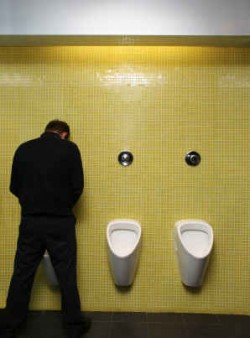Benign Prostate Hyperplasia
 When we have a medical condition, we assume there will be symptoms. We are confused if there may not be symptoms. Such is the case for men who have a harmless condition known as benign prostatic hyperplasia, enlarged prostate or BPH.
When we have a medical condition, we assume there will be symptoms. We are confused if there may not be symptoms. Such is the case for men who have a harmless condition known as benign prostatic hyperplasia, enlarged prostate or BPH.
Odd Mix of Conditions with Symptomatic Manifestations. Many men do not show any symptoms with BPH. The most common symptoms manifest in the lower urinary tract. When these occur there is a wide range of symptoms. Some men experience mild symptoms and barely notice them, while others experience painfully unpleasant and very destabilizing effects around having to discharge urine. There is a further complication with prostate enlargement- the seriousness of symptoms is not directly correlated to the extent of the glandular enlargement. There is ample documentation of opposite correlations between size and symptoms. Men with unusually enlarged prostate glands have mild to non-existent symptoms. Men with only slightly enlarged prostate glands experience seriously inconvenient symptoms.
External Variables. Sometimes symptoms can manifest in ways that are dependent upon the weather. Warmer climates can ease severity of symptoms. Colder weather may exacerbate symptoms, making them more serious or even acute. Emotional stress can aggravate otherwise milder symptoms. Relaxation activities can have a positive reducing effect.
Over the counter medications and some prescribed medications can aggravate symptoms. Allergy and cold sufferers have reported that common medications have made their symptoms worse. Patients using anti-depressants on a regular basis have reported aggravated symptoms. Diuretics and testosterone supplements have been reported to affect symptoms negatively.
Bladder Efficiency and Capacity. A popular understanding of enlarged prostate as a condition includes how the flow of urine is affected. The male urethra is a long passage for urine to travel from kidneys, or the renal tract, through the filtering and storage capacity of the bladder, located “above” the prostate gland, and descending on down through the male sex organ toward the elimination point of the urethral opening. If we conceptualize the urethra passing through the confines of the prostate gland, it is best visualized as a straw passing through a loosely clenched fist. The grip of the fist, so long as it remains loose allows for flow through the straw. If the grip is tightened at all, flow is restricted. Any restriction to flow causes and increase in pressure in the direction where flow enters the passage. And there is a decrease in flow on the side opposite where flow leaves the passage way.
Fluid Flow and Pressure Imbalances.The first is synonymous with the prostate gland which fits around the urethral passage (the straw). If the prostate enlarges, the fine tolerances around the urethral “tube” are narrowed, like a fist slowly squeezing around the straw. Urine flows from the storage vessel of the bladder when the urine stimulates the nerves of the bladder muscles and the sensation of pressure stimulates the brain to open the “sphinctral passage” of the bladder, allowing urine to enter the urethral tube. An enlarged prostate will gradually reduce, as the fist clenches more firmly because it is growing larger in a restricted space, the flow path for the urine. This will cause urine to flow more slowly into the urethral tube, backing up the flow of urine due to pressure in the tube, and for the urine stream to be reduced –at first barely noticeably- on its way out of the body. After chronic prostate enlargement, the back pressure against the bladder will weaken the sphinctral muscles enough from the outside that they will fail to remain open long enough to permit full discharge of urine from the holding tank, or the bladder.
The incomplete elimination means that the bladder will fill up again faster and suddenly because the natural timing of urine breaks has been disrupted. And as pressure on the urethra passage directly in contact with the enlarged prostate builds, flow and pressure on the elimination side is reduced even further making the discharging of urine more and more inefficient.
The complete cycle from normal prostate size to maximal enlargement can take a decade. During this time the normal urination habits of the adult male can become completely destabilized, affecting sleeping habits due to excessive night time urination, and social habits due to extreme and urgent impulses to urinate followed by very slow, time consuming stops for the bathroom.
